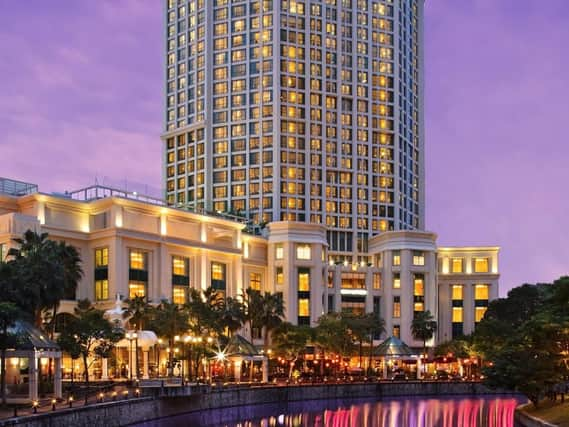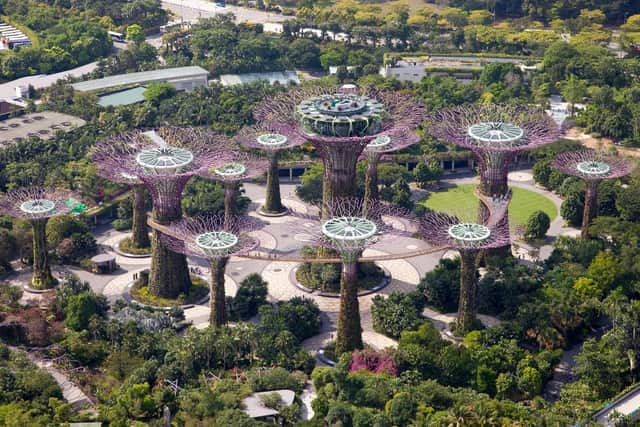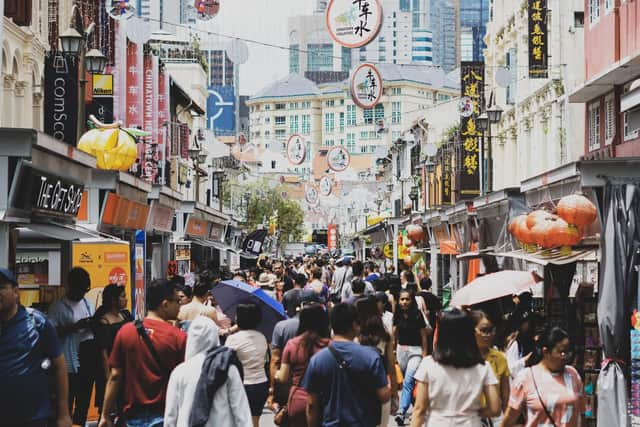Scotland on Sunday travel, Singapore: Practice lap of the gourmet Grand Prix


“Singapore, what a place,” a slightly inebriated man told me. “I used to live there,” he continued. Oh no, he’s going to give me his life story here. Not quite, but he talked it up a lot, particularly the food and gardens. He left me in no doubt that I should go if the chance ever arose.
In a quirk of fate, my travel editor – just days after my conversation with Lewis Hamilton’s biggest fan – offered me the chance to jet across the world to this city state. I heeded the advice.It’s a long way to Singapore. I’ve never had 13 hours on a plane before, but my journey from Heathrow to Changi Airport wasn’t arduous. I spent a decent chunk of it reading up on what to do. My motorhead was right: gardens and food. Story verified.
Advertisement
Hide AdAdvertisement
Hide AdActually, there’s a lot more to Singapore. Founded by Britain’s Sir Stamford Raffles as a trading post yet independent since 1963, it’s a prosperous city state and the only place in Asia to have an AAA sovereign rating. Singapore is swimming in money. Modern buildings, sleek skylines and an abundance of high-end shops. Your credit card could have a field day.


The first thing that struck me about Singapore was the cleanliness. Heck, even chewing gum is banned. It is a country that prides itself on its image. It’s easy to forget you are in Asia – street names are just like Blighty – as it doesn’t have the chaotic, grimy feel of a Beijing, Bangkok or Delhi.
When I visit big cities these days – and with a population of 5.6million, this definitely fits that label – I tend to stay in two different hotels in two different neighbourhoods. My first abode was Millennium’s Orchard Hotel on Singapore’s most famous shopping thoroughfare, Orchard Road. This hotel has had a recent renovation and has a classy ambience. The foyer is dominated by a grand, stately clock and the rooms are comfy, clean and hi-tech. USB ports everywhere, flatscreen TVs and fantastic air-con, which is a must. It rarely dips beneath 30C in Singapore.
The Orchard Hotel also gave me my first experience of Singaporean food. My word, it’s good. Most hotel buffets are best swerved, but not this one. Each station has a bespoke chef and all Asian cuisines are served. It’s easy to get fat here.
The Orchard’s prize possession is the Michelin-plated Hua Ting restaurant. I’ve never dined in a Chinese eatery of such repute. Smoked Peking duck, double-boiled chicken soup with sea conch and organic black truffle and steamed crab claw with ginger purée are just some of the dishes I sampled. Delicious.


Chinese is the dominant race in Singapore, but it really is a diverse place. Indians, Malays, Indonesians and Thais make up a decent chunk of the population. I visited Chinatown and Little India and these areas were as authentic as you can get. I enjoyed dotting around from district to district, getting a different flavour of Asia each time.
I’m always keen to live like a local whenever I travel and my second hotel, the Grand Copthorne Waterfront, organises a tour of Tiong Bahru, a quarter that has clung on to its traditions within which are a couple of hawker centres. However, because of the quality control in Singapore, each stall needs to meet certain health and food standards. This is where the locals eat and the plat du jour is chicken rice. The rice is cooked in a tasty stock and the poached chicken is so tender. You dip both in three different sauces – ginger, soy then chilli – and bang, you’re in for a treat. It costs just $2, which is about £1.40, for a hearty meal. No wonder Singaporeans mostly eat out.
On a tour with local food blogger Maureen of Misstamchiak, I tried some of the other dishes locals often eaten in hawker centres. They include oyster cakes filled with veg and prawns, roast duck rice, an imaginative concoction called chendol – shaved ice, palm sugar, pandan, rice and rape beans – and doughnuts, either sweet or savoury. They are all good, extremely authentic and with more than 120 hawker centres in Singapore, you won’t struggle to find them. Just beware of durian, a fruit pretty much exclusive to this part of the world. It is pungent and looks a little like mucus when cooked. Singaporeans love it, but as you probably guessed from the description, it’s not for me.
Advertisement
Hide AdAdvertisement
Hide AdThe Grand Copthorne Waterfront is also a fine, modern hotel. It’s a little more central and next to the bay, offering some pretty neat views. Food is of a high standard too, even if at that point my gut was starting to groan. They have a swanky Italian restaurant, Grissini, that offered brief respite from Asian cuisine.
Singapore is remarkably green. The Botanics to the north of the city are vast and beautiful, with orchids everywhere. They are trumped – just – by Gardens By The Bay. I have never seen anything like it. Landscaped in 2012, it is a nature park of more than 100 hectares on reclaimed land right in the centre. It has a series of towers adorned with vines and flowers that are linked by a walkway, allowing spectacular vistas. There are also two domes, one of which recreates different parts of the world and the other that mimics a cloud rainforest.
Strolling around the lush land, if someone told me I was in 2050 I wouldn’t have argued, such is the futuristic feel of it all. And of course, there’s a tremendous place to eat called Satay by the Bay. Satay is big in Singapore and this is the place to eat it. Chomping on my peanut-coated chicken skewers, I can see why they nickname this place “The Garden City”.
Other attractions visited include the National Gallery, which shows off some of Asia’s finest artists and has plenty of wacky, modern exhibits, while if you visit with children, a trip to the Art Science Museum is a must. Hours of fun can be had there and even as a 34-year-old, I took far too much pleasure in drawing a multi-coloured fish and then watching it being brought to life on a giant screen.
I must mention a hidden gem in the Orchard Road area – the Peranakan Gallery and restaurant. The Peranakans are an ethnic group descended from Chinese traders who left their motherland to settle in other parts of Asia. They have tended to maintain their traditions abroad, which include exuberant dress and yes, you guessed it, lovely food. It’s a mixture of Chinese and Indonesian fare and the Peranakan banquet I was treated to was divine. The tastiest dish was beef rendang and the craziest was a chicken curry with buah keluak, a Peranakan nut that unless cooked properly is highly poisonous. The nut has to be fermented, but the fruits of the labour are worth it. It tastes like rich chocolate and gives the sauce a sensational flavour.
Sipping on my Singapore Sling in departures at Changi Airport, I couldn’t help but feel that Singapore is the perfect place for a soft landing into Asia, lapping up the food and culture in a very comfortable environment. Maybe I’ll return for the Grand Prix one day.
- Stays at Orchard Hotel Singapore start from SGD $220++ to $500++ (approx. £125/£285) depending on dates.- Stays at Grand Copthorne Waterfront start from SGD $220++ (approx. £125) for a Superior Room.- For more information or to book, please visit www.millenniumhotels.com.